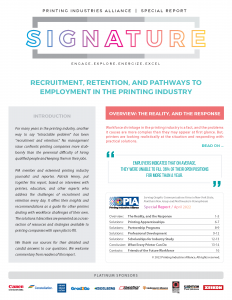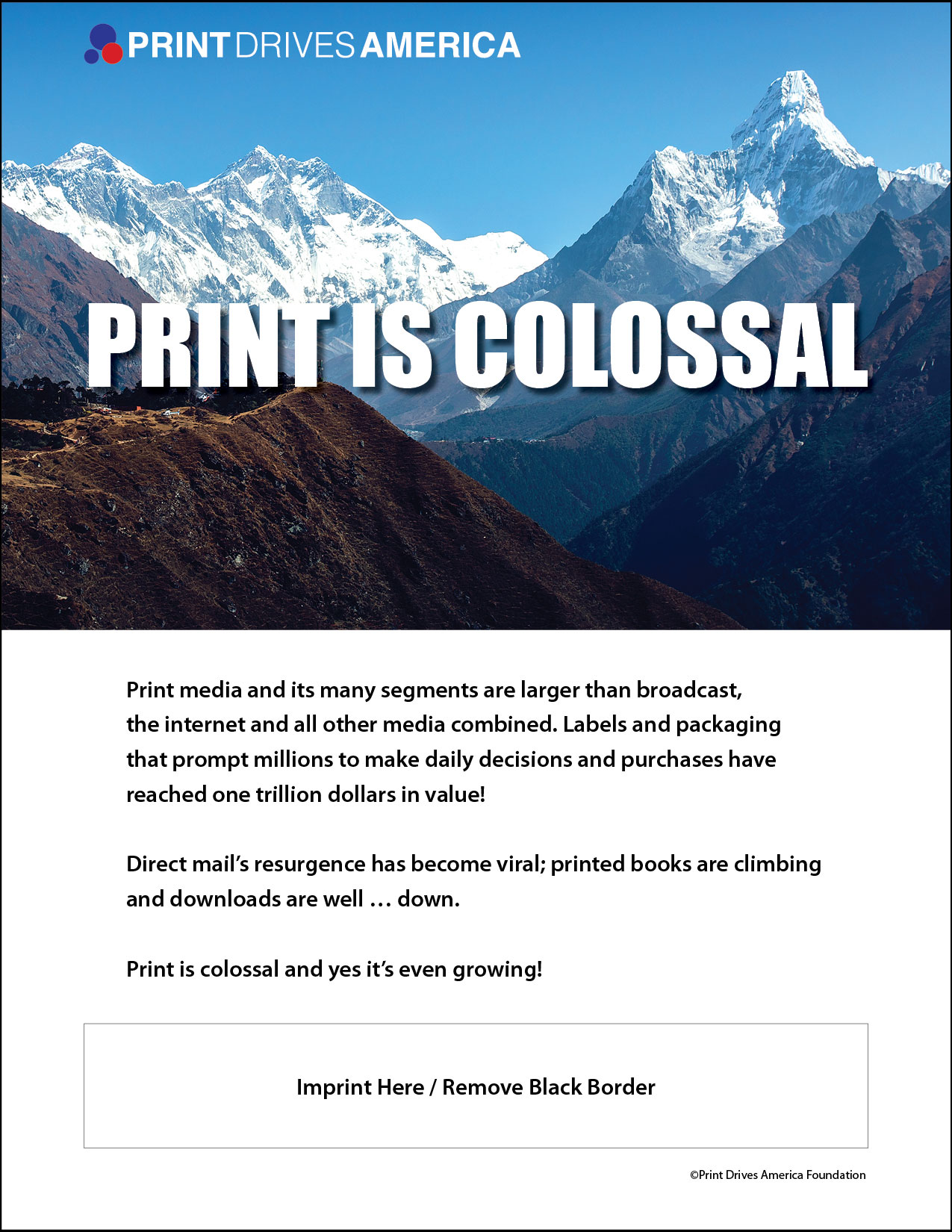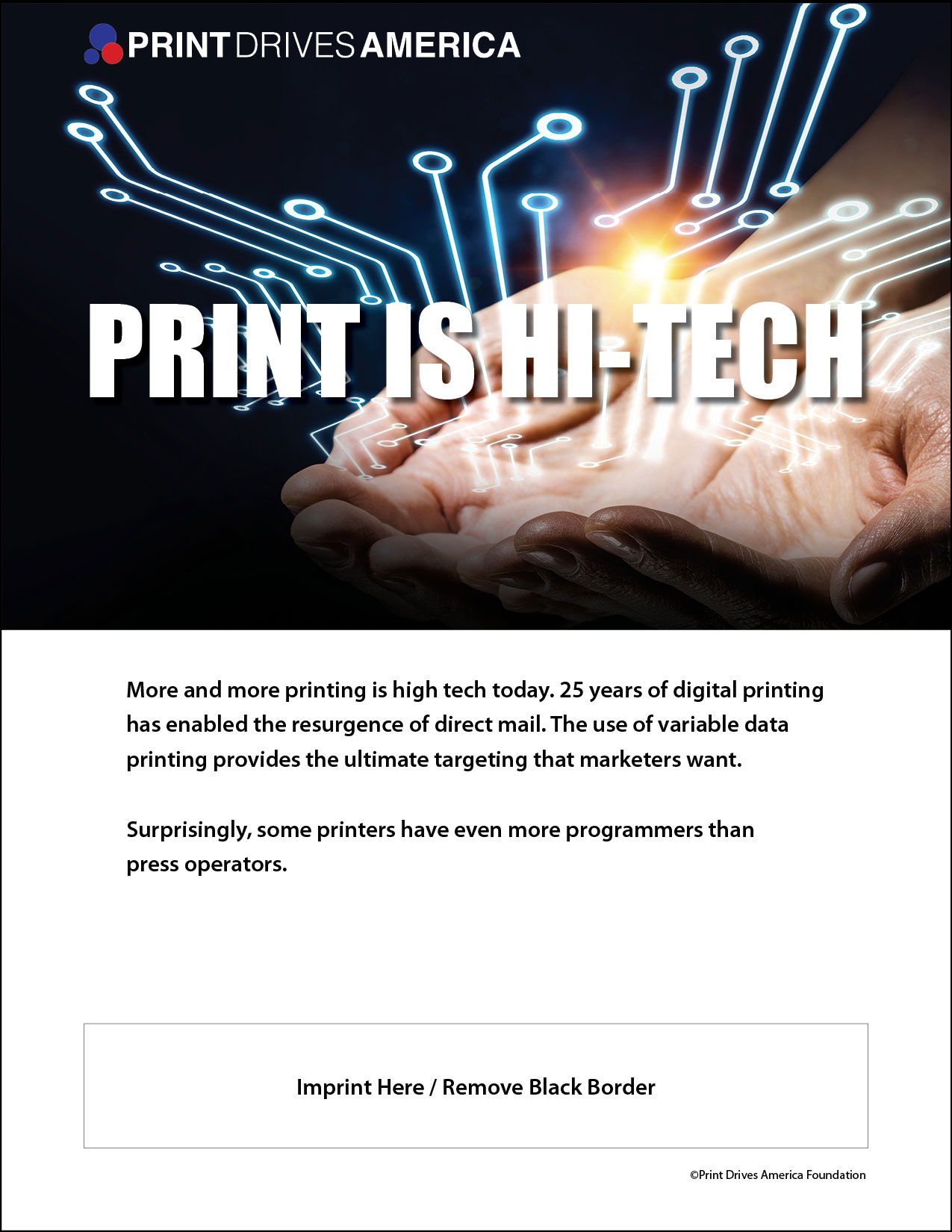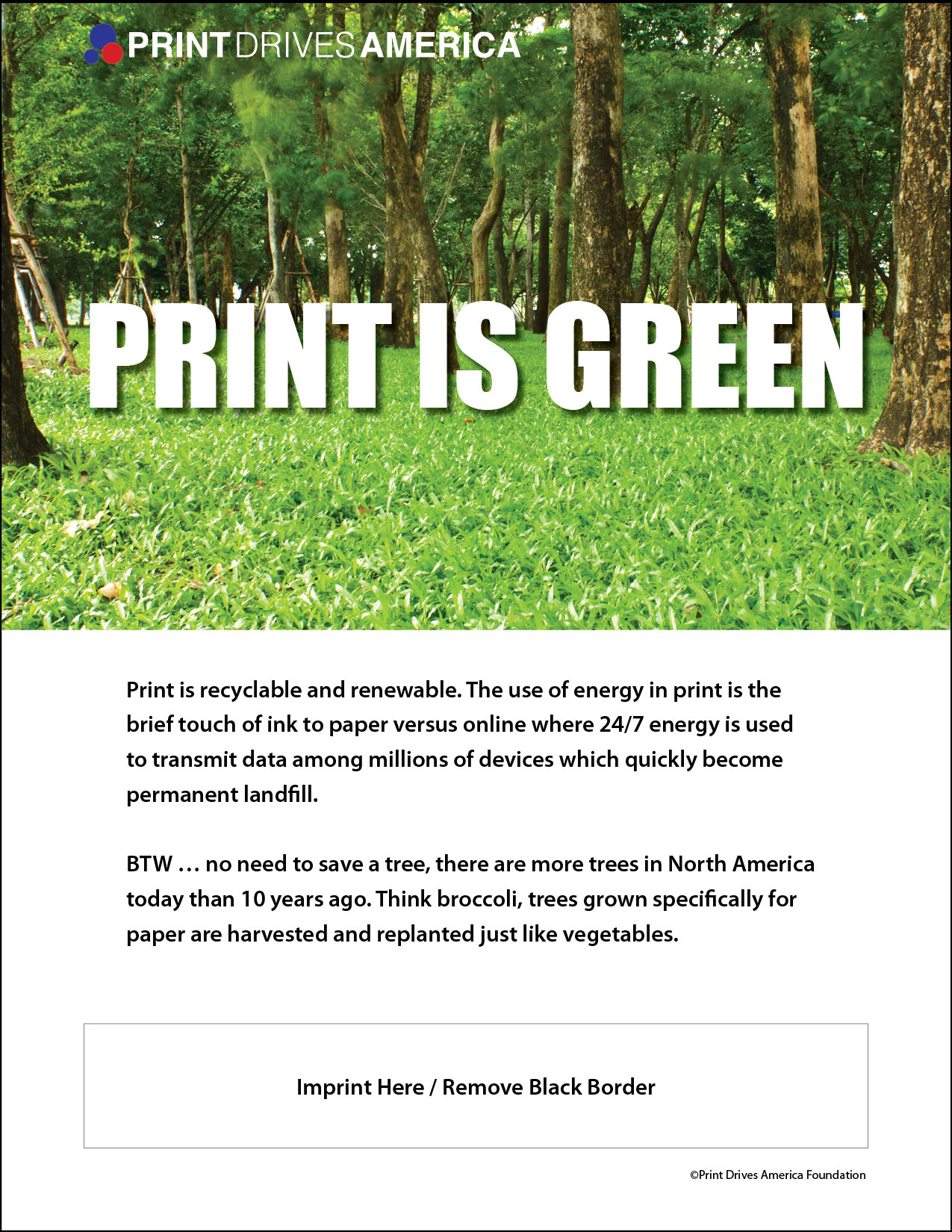By Patrick Henry, Liberty or Death Communications
Solutions: Printing Apprenticeships – Part 2 of the White Paper: Recruitment, Retention, and Pathways to Employment in the Printing Industry
Solutions: Printing Apprenticeships
Benjamin Franklin, patron saint of printing, learned the trade as an apprentice in his brother James’s shop in Boston and later became the official printer of Pennsylvania. Today, some of his spiritual heirs in the Keystone State are reviving this time-honored method of developing new talent for industries of all kinds.
The Pennsylvania Project
Apprenticeships.gov, an online resource of the U.S. Department of Labor (DOL) , defines apprenticeship as “an industry-driven, high-quality career pathway where employers can develop and prepare their future workforce, and individuals can obtain paid work experience, classroom instruction, and a portable, nationally-recognized credential.”
The DOL, which in 2020 projected it would enroll one million new apprentices by September 30, 2021, says that 92% of those who complete an apprenticeship retain employment with an average annual salary of $72,000. That message of opportunity rang true to a group of Pennsylvania printers and educators who saw apprenticeships as a solution for enriching the industry’s labor pool in their state.
The apprenticeship programs they are near to completing stand as examples of how printing companies and schools can cooperate in channeling well-trained and eager-to-work young people from the classroom to the shop floor.
The plan first took shape at a November 2017 meeting of the Susquehanna Litho Club, where printers including the H&H Group (Lancaster) and Standard Group (Lititz) explored the idea with representatives of Thaddeus Stevens College of Technology (Lancaster), the Milton Hershey School (Hershey), and the Apprenticeship and Training Office of the Pennsylvania Department of Labor and Industry (Harrisburg).
Starting from Scratch
The 1,590 registered apprenticeship programs that the state agency currently administers are training nearly 17,000 people in a variety of industries. It had authorized the creation of apprenticeship programs in printing before, but these had become so outdated “that they were really useless” in a contemporary setting, according to Williams of H&H Group. “Since they didn’t relate to our business, we were basically starting from scratch.”
For a long time, reviving apprenticeships in Pennsylvania had been a personal crusade for Michael DeAcosta, an instructor of graphic communication technologies at the Milton Hershey School. This institution, founded by chocolate magnate Milton S. Hershey and his wife, Catherine, in 1909, provides all-expenses-paid education in grades pre-K through 12 to children from low-income families.
Its trade-focused curriculum includes a graphic communications pathway that provides comprehensive coursework in print-related subjects in the high school years. About 100 students currently are enrolled in it.
DeAcosta also served as the president of the Susquehanna Litho Club in 2012 and 2013, during which time he says he spoke “with any employer who would listen” about reintroducing apprenticeships for print industry jobs. In a second, four-year term as president from 2017 to 2021, “that was my main focus.”
DeAcosta organized the Litho Club meeting at which the printers, the schools, and the state agency agreed to create state-registered apprenticeships for three job descriptions: customer service representative, finishing operator, and wide-format printer operator.
Young Trainees in Waiting
The printers worked with Thaddeus Stevens to design the three tracks in keeping with state requirements. At Milton Hershey, DeAcosta set up a parallel pre-apprenticeship program in binding and finishing that lets his high school students get credit for hours of training that they can apply to their full-time apprenticeship experiences later on.
Michael D. Brady, an instructor in graphic communications and print technology at Thaddeus Stevens, worked with H&H Group and Standard Group to define what an apprenticeship in the three job functions would look like. With his guidance, H&H Group developed the programs for customer service and wide-format production. Standard Group worked with him on the apprenticeship in finishing.
“People can get a little confused about what an apprentice is, so we wanted to have a clear example and a clear story to tell,” Brady says. The Pennsylvania apprenticeships remove any ambiguity by providing immersive, hands-on, earn-while-you-learn occupational training leading to professional competence in each job’s principal tasks.
The state-approved apprenticeship in finishing that Standard Group developed, for example, consists of 2,000 hours of on-the-job training with specified pay increases occurring at various stages of progress. The subjects to be mastered span the entire range of processes and machine functions found in a modern bindery, from folding, trimming, and cutting through stitching, perfect and case binding, and value-adding techniques such as die cutting and embossing.
Brady says that because evaluations are based on the competency that apprentices demonstrate instead of the time they put in, trainees can move through the programs relatively quickly: in about 18 months, as opposed to the two or three years that some apprenticeships take.
Employers administering the programs pledge to comply with state rules about what apprentices will be paid during their training and how their equal employment opportunity and affirmative action protections will be upheld. In some cases, employers may be eligible to receive financial reimbursement for apprenticing people from population groups the state recognizes as underserved.
Pennsylvania, and Beyond
A central objective of the printing program was to make it portable. This, says Brady, was the point of working with both H&H Group and Standard Group: “to show that we are not just building this for one company. We are trying to build it for central Pennsylvania, which is right for our community.”
Employers outside the region may benefit as well. Williams explains, “we had to set it up in such a way that we would consider the broader view of companies, and not just how our company was set up, so that it could be used by other companies. Because it’s not just for the H&H Group. Programs are available for any printer across the entire United States.”
The state approved the program in 2020 after a review before a board of examiners. Williams says that as a result, printers anywhere in the country who want to apprentice people as wide-format operators, finishers, and CSRs don’t have to invent their own methodologies – they are free to implement the Pennsylvania apprenticeships instead.
Or they will be, as soon as the programs clear their final hurdles. COVID-19 slowed down implementation, and DeAcosta says a related instructional component required for state recognition is still being finalized. Meanwhile, his students at Milton Hershey continue to rack up hours in pre-apprenticeship and will be ready to move into the program’s full-time, earn while-you-learn phase once it’s fully operational.
H&H Group’s Heisey says the goal there is to bring on a full-time apprentice in wide-format production this fall. Expectations for the programs are high among all those who took part in creating them.
Succession Planning for All Jobs
Sue Overly, director of human resources at Standard Group, says that when the company took a close look at the demographics of its work force a few years ago, it realized the need for “succession planning” at all levels of employment.
Standard Group has always been an active local recruiter, working principally with the Career Technical Center (CTC), a vo-tech school in Lancaster, to create job opportunities for students. A number of them have advanced to management positions in the company. The company also sponsors three interns from Thaddeus Stevens.
Overly says Standard Group understands that workforce development through apprenticeships is a long-term commitment. “We know for the future that we need to get folks in here to get trained,” she says. “It is a craft, and to get somebody up to full speed takes quite a while.” Standard Group project manager Brian Keck – also treasurer of the Susquehanna Litho Club – adds that retirement of Baby Boom-generation employees over the next five to 10 years will make the task that much more urgent.
Brady notes that this is precisely what makes apprenticeships, with their scheduled pay raises and expanding sets of responsibilities, so valuable to employers who are concerned about long-range staffing needs.
“What I like about the apprenticeship and the relationship that it builds between the new employee and the company is that you are already talking down the road,” he explains. “You are saying, ‘I’m going to pay you more at this day, and more at this day.’ It gets young people thinking forward, about what the next five years, what the next ten years are going to bring.”
‘A Much Better Placement’
Recruiting young people groomed for their jobs in this way is a better bet for employers than “hiring off the street,” DeAcosta observes. “I would much rather hire a student who has expressed this interest in school and has put blood, sweat, tears, and time into it to say, ‘Hey, this is my career.’ That’s a much better placement.”
Preferring proven talent also heads off the potentially costly risk of gambling on people with no prior experience. As DeAcosta notes, “training and development is a huge expense for a company, and if that person doesn’t last more than a few months, that’s just a big waste of money.”
Williams’s advice for printing companies wishing to create their own apprenticeship programs is twofold: “Don’t start from scratch, and don’t do it alone.” Reach out to state agencies, local groups like the Susquehanna Litho Club, and other printers in the area to learn what resources already exist and how best to build on them.
Heisey notes that H&H Group was fortunate to have trade-oriented institutions like Thaddeus Stevens College of Technology and the Milton Hershey School to build a program within its own back yard. He says printers who don’t have that advantage can and should search outside their immediate vicinities for apprenticeship programs that they can use as models, “even if it’s in the next state over.”
To keep reading, download the Recruitment, Retention and Pathways to Employment in the Printing Industry White Paper.
Contact me at tim@printcommunications.org or (716) 691-3211 with any questions.
Tim Freeman, President
Print & Graphic Communications Association





